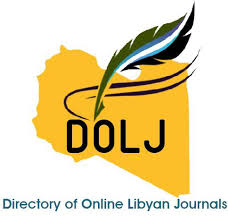Extent of Achieving KDOQI Targets For hemodialysis Adequacy in Libyan dialysis patients: A Multicentre Cross-Sectional Study
DOI:
https://doi.org/10.54361/LJM17-2.09Keywords:
hemodialysis, , adequacy, KDOKI targets, LibyaAbstract
Dialysis is a therapy to maintain the lives of end stage renal disease patients (ESRD), and the adequacy of hemodialysis is essential as it can improve patient’s survival, quality of life and biochemical profiles. This study aimed to evaluate the extent of achieving Kidney Disease Outcomes Quality Initiative (KDOQI) targets for dialysis adequacy, haemoglobin level, mineral bone disorders and nutritional status among hemodialysis patients. patients and method: This study was carried out on 286 regular haemodialysis adult patients from eleven hemodialysis centers in Libya. Patients subjected to BMI calculations. Blood samples collected for complete blood count, serum albumin, blood urea pre and post dialysis session, serum creatinine, total serum calcium, serum phosphate, serum alkaline phosphatase, C reactive protein, and serum iPTH levels. Targets measures based on the KDOQI Clinical Practice Guidelines. Result: Mean Kt/V was 1.31±0.40.only 174 (60.84%) patients had adequate dialysis dose (Kt/V>1.2). Mean iPTH was 490.08±694.7. According to the KDOQI, guideline 19.2% of the patients was within the target range for parathormone level. 26.92 % of studied patients had a haemoglobin level of 11gm/dl or more. Mean serum albumin is 3.81±0.64, hypoalbuminemia (albumin <3.5g/dl) was in 27.98% of studied patients. Conclusion: According to KDOQI guidelines 39.16% of the studied patients did not achieve the target dose for adequate clearance, 73.08% did not achieve the target haemoglobin level; and, only 19.2% of the studied patients were within the target range for parathyroid hormone level. According to BMI as nutritional markers, 14.0% of studied patients were underweight and 27.98% were with serum albumin below (3.5 g/dl).
Downloads
References
- Robinson BM, Akizawa T, Jager KJ, Kerr PG, Saran R, Pisoni RL. Factors affecting outcomes in patients reaching end-stage kidney disease worldwide: Differences in access to renal replacement therapy, modality use, and haemodialysis practices. Lancet 2016;388:294-306
- Port FK, Ashby VB, Dhingra RK, Roys EC, Wolfe RA. Dialysis dose and body mass index are strongly associated with survival in hemodialysis patients. J Am Soc Nephrol 2002;13: 1061-6.
- Couchoud C, Kooman J, Finne P, et al. From registry data collection to international comparisons: Examples of haemodialysis duration and frequency. Nephrol Dial Transplant 2009; 24:217-24.
- Azar AT, Wahba K, Mohamed AS, Massoud WA. Association between dialysis dose improvement and nutritional status among hemodialysis patients. Am J Nephrol 2007;27: 113-9.
- Amini M, Aghighi M, Masoudkabir F, et al. Hemodialysis adequacy and treatment in Iranian patients: A national multicenter study. Iran J Kidney Dis 2011;5:103-9
- Hemodialysis Adequacy Work Group. Clinical practice guidelines for hemodialysis adequacy, update 2006. Am J Kidney Dis 2006;48 Suppl1:S2-90.
- Daugirdas JT. Kt/V (and especially its modifications) remains a useful measure of hemodialysis dose. Kidney Int 2015;88:466-73.
- Daugirdas JT. Simplifi ed equations for monitoring Kt/V, nPCR and eKt/V. AdvRen Replace Ther 1995; 2:295– 304.
- Anas AlYousef, Sumaya AlGhareeb, Jamal Al Wakeel, Saeed M. Alghamdi, Brian A. Bieber, Mohamad Hassan, Yacoub Al Maimani, Naser Alkandari, Ashraf Fawzy, Ronald L. Pisoni5. Hemodialysis Delivery, Dialysis Dose Achievement, and Vascular Access Types in Hemodialysis Patients from the Gulf Cooperation Council Countries Enrolled in the Dialysis Outcomes and Practice Patterns Study Phase 5(2012–2015).Saudi J Kidney Dis Transpl 2016;27(6 Suppl 1):S42-S50
- Anneke Kramer, Maria Pippias, Marlies Noordzij, Vianda S Stel, Nikolaos Afentakis, Patrice M Ambühl, Anton M Andrusev, Emma Arcos Fuster, Federico E Arribas Monzón, Anders Åsberg. The European Renal Association – European Dialysis and Transplant Association (ERA-EDTA) Registry Annual Report 2015: a summary. Clinical Kidney Journal, Volume 11, Issue 1, February 2018, Pages 108–122.
- ESRD Annual Report. Clinical performance measures project. Am J Kidney Dis Suppl 2008; 51 :S1.
- DOPPS 4 (2010) annual report. https://www.dopps.org/annualreport/archives/DOPPSAR2010/index.htm
- Mabrouk El-Sheikh and Ghada Al-Ghazaly. Assessment of hemodialysis adequacy in patients with chronic kidney disease in the hemodialysis unit at Tanta University Hospital in Egypt. Indian J Nephrol. 2016 Nov-Dec; 26(6): 398–404.
- Lambie SH, Taal MW, Fluck RJ, McIntyre CW. Analysis of factors associated with variability in haemodialysis adequacy. Nephrol Dial Transplant 2004; 19:406 –12
- Kim YO, Song WI, Yoon SA, et al. The effect of increasing blood flow rate on dialysis adequacy in hemodialysis patients with low Kt/V. Hemodial Int2004; 1 :85
- Borzou Sr, Gholya f M, Zandih a M, Amin i R, Goodarzi MT, Torkaman B. The effect of increasing blood fl ow rate on dialysis adequacy in hemodialysis patients. Saudi J Kidney Dis Transpl 2009; 20:639 –42.
- Piraino B, Chen T, Cooperstein L, Segre G, Puschett J. Fractures and vertebral bone mineral density in patients with renal osteodystrophy. Clin Nephrol 1988;30:57-62.
- Danese MD, Kim J, Doan QV, Dylan M, Griffiths R, Chertow GM. PTH and the risks for hip, vertebral, and pelvic fractures among patients on dialysis. Am J Kidney Dis 2006;47:149-56.
- London GM, Marty C, Marchais SJ, Guerin AP,Metivier F,de Vernejoul MC.Arterial calcifications and bone histomorphometry in end-stage renal disease. J Am Soc Nephrol 2004;15:1943-5.
- Ikizler TA, Burrowes JD, Byham-Gray LD, et al; KDOQI Nutrition in CKD Guideline Work Group. KDOQI clinical practice guideline for nutrition in CKD: 2020 update. Am J Kidney Dis. 2020;76(3)(suppl 1):S1-S107.
Downloads
Published
Issue
Section
License
Copyright (c) 2023 Khairi S. Ayad, , Badreddin S. Shaibani, Zaynab A. Rahouma1, Marwa A. Elmelowdi, Ibrahim M. Abualqumsaan, Amina Smaida4, Faraj A.Tamtum, , Huda M. Salama, Malak M.Alborki, Mohamed K. Aboalgasem, Asma Mahmoud, Asma S.Alhabry, Najah Asbak, , Hana A. Bobaker (Author)

This work is licensed under a Creative Commons Attribution-NonCommercial-NoDerivatives 4.0 International License.
Open Access Policy
Libyan journal of medical Research (LJMR).is an open journal, therefore there are no fees required for downloading any publication from the journal website by authors, readers, and institution.
The journal applies the license of CC BY (a Creative Commons Attribution 4.0 International license). This license allows authors to keep ownership f the copyright of their papers. But this license permits any user to download , print out, extract, reuse, archive, and distribute the article, so long as appropriate credit is given to the authors and the source of the work.
The license ensures that the article will be available as widely as possible and that the article can be included in any scientific archive.
Editorial Policy
The publication of an article in a peer reviewed journal is an essential model for Libyan journal of medical Research (LJMR). It is necessary to agree upon standards of expected ethical behavior for all parties involved in the act of publishing: the author, the journal editorial, the peer reviewer and the publisher.
Any manuscript or substantial parts of it, submitted to the journal must not be under consideration by any other journal. In general, the manuscript should not have already been published in any journal or other citable form, although it may have been deposited on a preprint server. Authors are required to ensure that no material submitted as part of a manuscript infringes existing copyrights, or the rights of a third party.
Authorship Policy
The manuscript authorship should be limited to those who have made a significant contribution and intellectual input to the research submitted to the journal, including design, performance, interpretation of the reported study, and writing the manuscript. All those who have made significant contributions should be listed as co-authors.
Others who have participated in certain substantive aspects of the manuscript but without intellectual input should only be recognized in the acknowledgements section of the manuscript. Also, one of the authors should be selected as the corresponding author to communicate with the journal and approve the final version of the manuscript for publication in the LJMR.
Peer-review Policy
- All the manuscripts submitted to LJMR will be subjected to the double-blinded peer-review process;
- The manuscript will be reviewed by two suitable experts in the respective subject area.
- Reports of all the reviewers will be considered while deciding on acceptance/revision or rejection of a manuscript.
- Editor-In-Chief will make the final decision, based on the reviewer’s comments.
- Editor-In-Chief can ask one or more advisory board members for their suggestions upon a manuscript, before making the final decision.
- Associate editor and review editors provide administrative support to maintain the integrity of the peer-review process.
- In case, authors challenge the editor’s negative decision with suitable arguments, the manuscript can be sent to one more reviewer and the final decision will be made based upon his recommendations.













